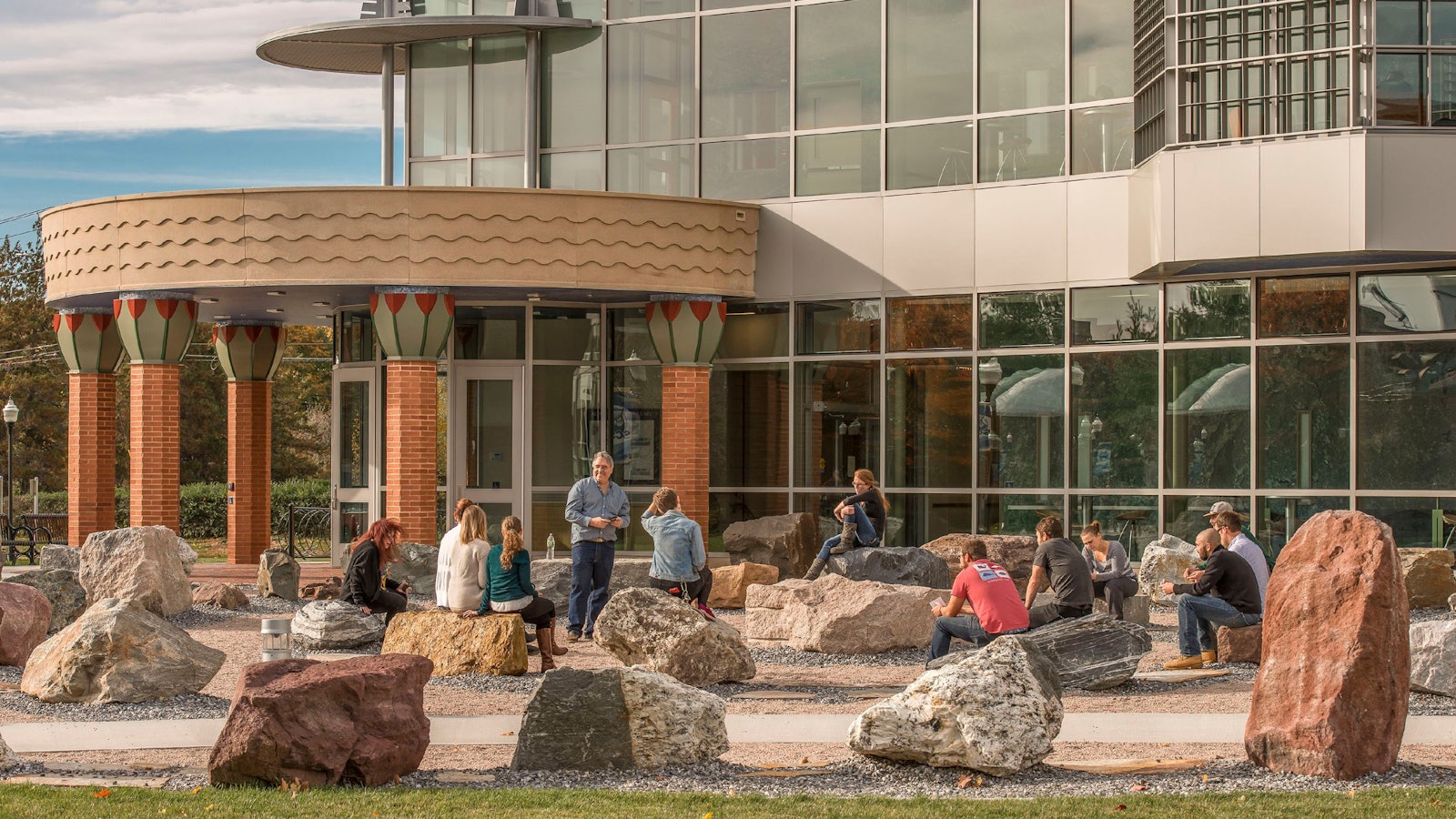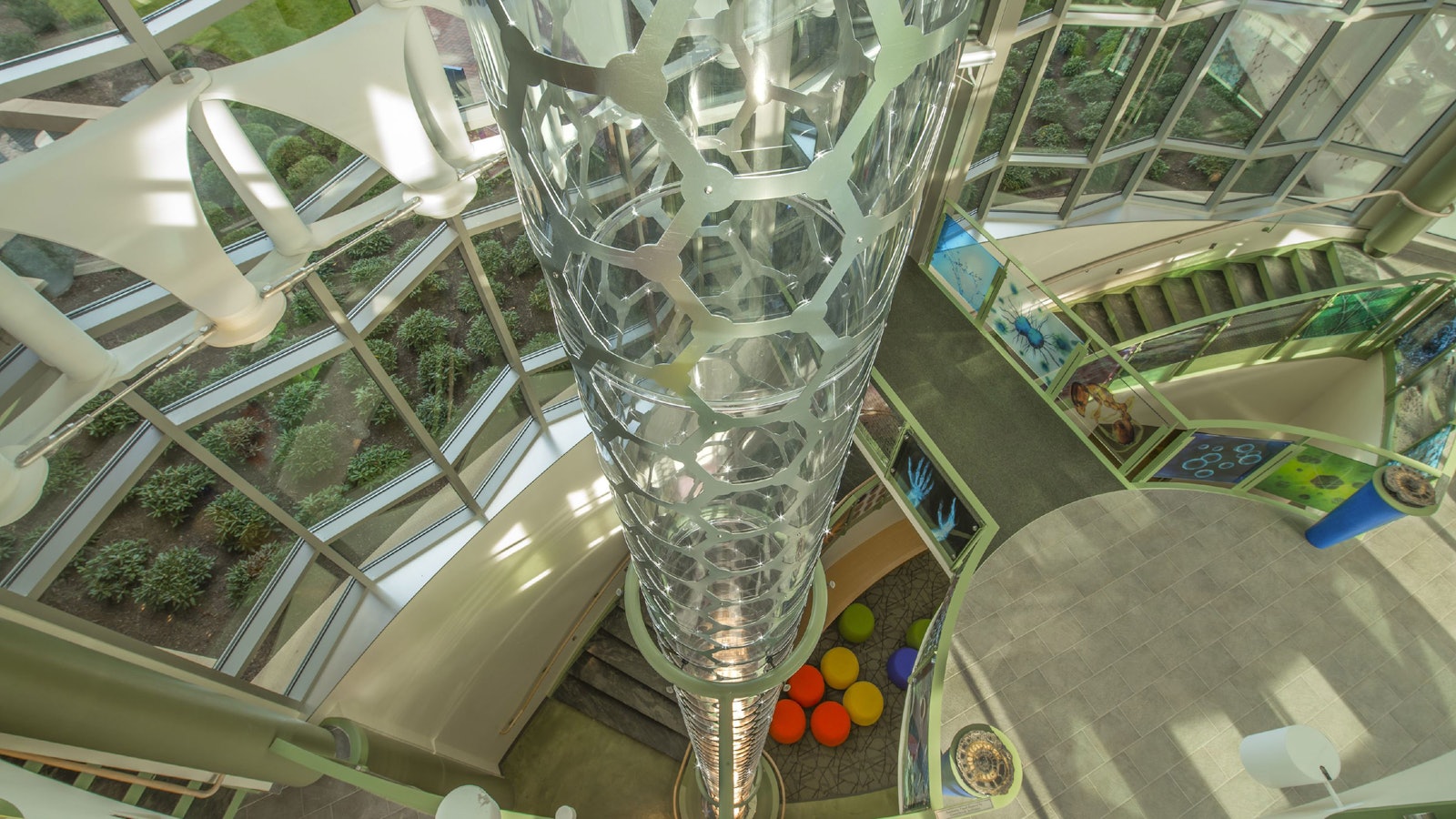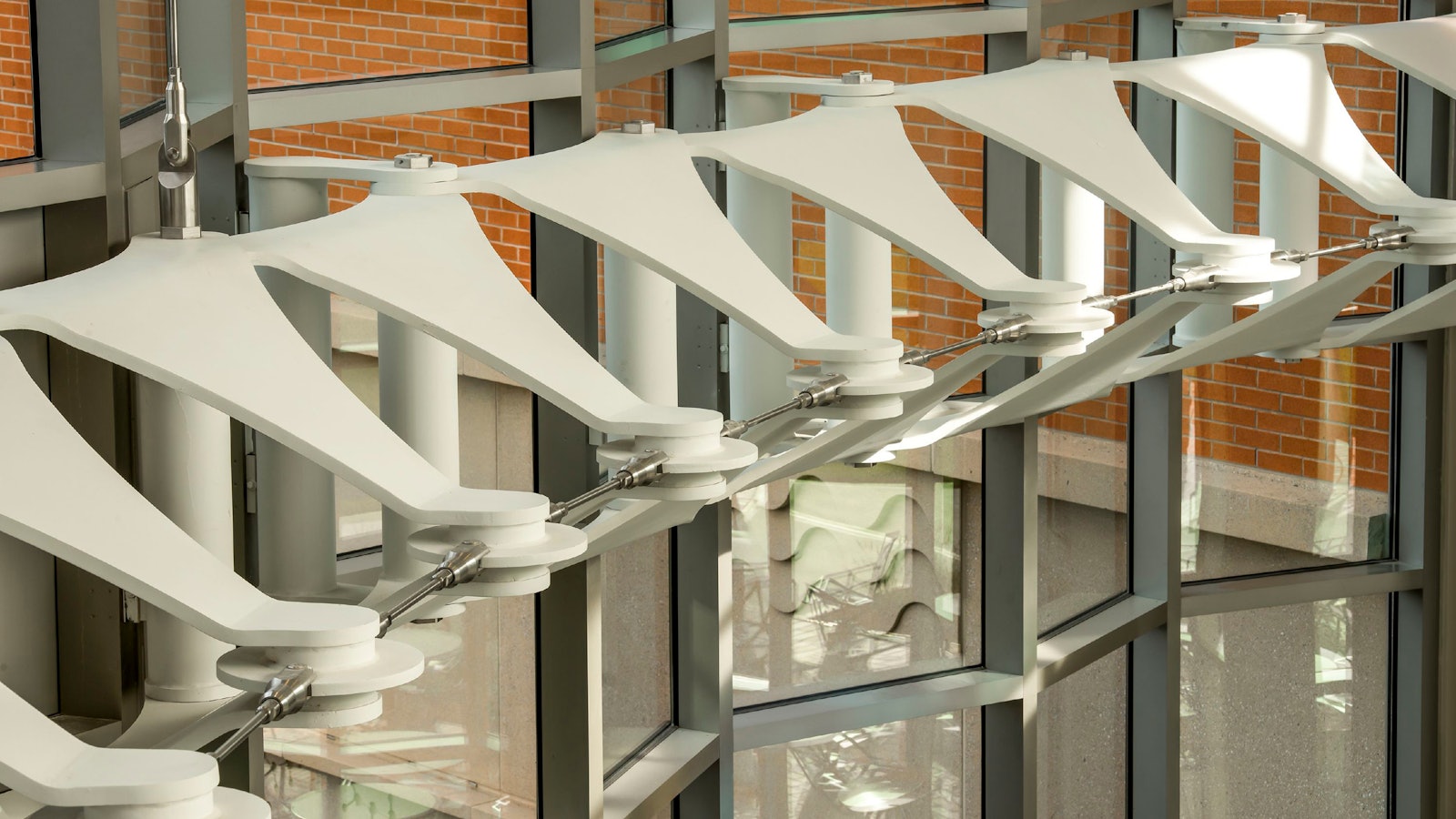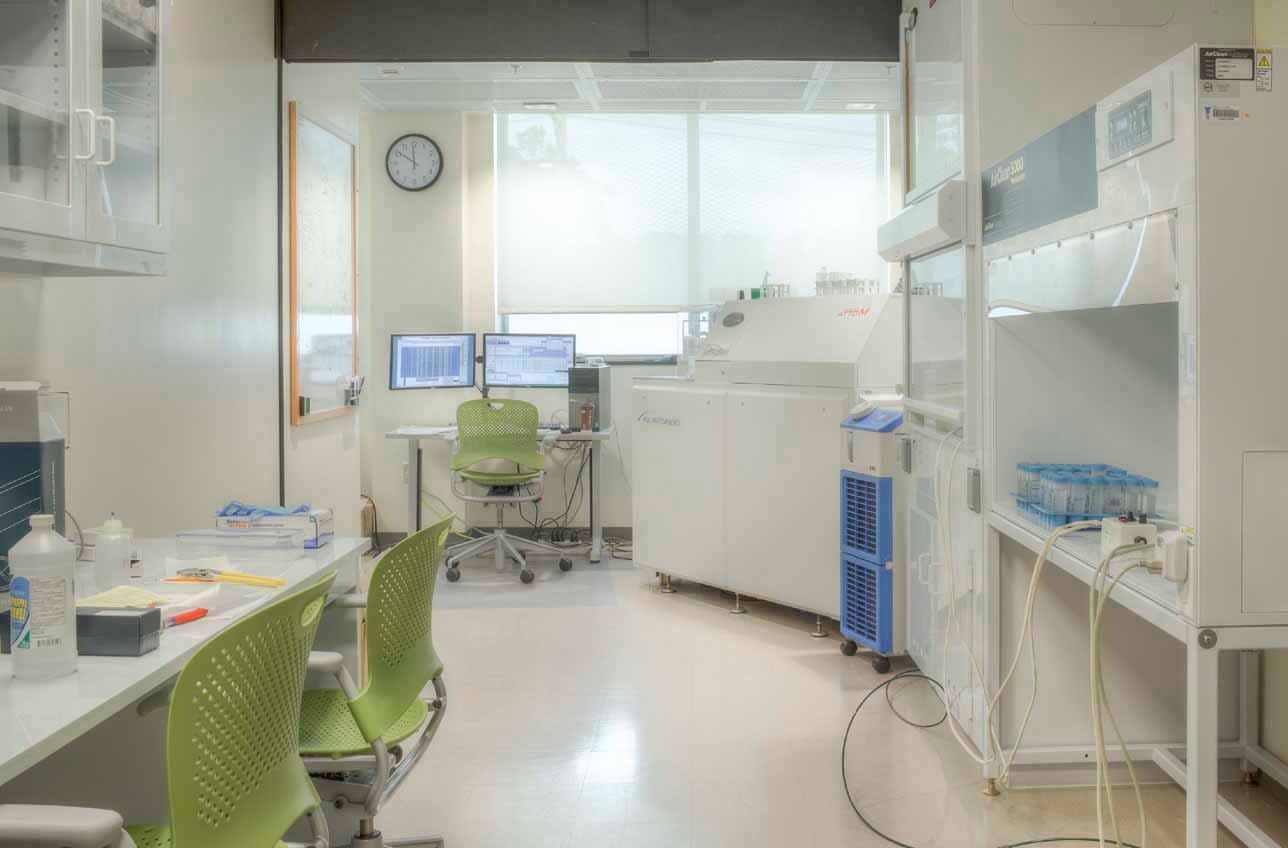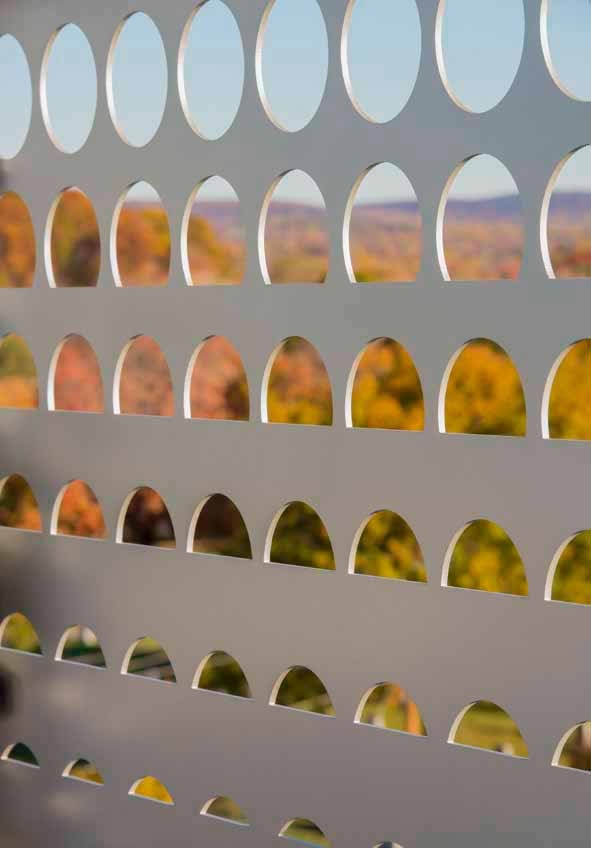Academic Science & Laboratory Building
The Academic Science & Laboratory Building was designed to expand and enhance the STEM curricula at Southern Connecticut State University. It is both a state-of-the-art teaching and learning environment as well as an artfully designed structural centerpiece for the university.
Configured in an L-shape, the building works in concert with two pre-existing science buildings — Jennings and Morrill Hall — to enclose a new “science enclave.” Bedecked with research displays and instrumentation visible from within and outside the building, the new center is emblematic of the importance of the sciences on campus. Embracing innovative sustainable design, it houses teaching and research training laboratories for the Center for Nanotechnology, Physics, Optics, Materials Sciences, Astronomy, the Center for Coastal and Marine Studies, Environmental Studies, Earth Sciences, Chemistry and Biology.
Southern Connecticut State University
“Nothing inspires and instructs more profoundly than great art and architecture and our new Academic Science and Laboratory Building is, at once, both—it is powerful state-of-the-art teaching and learning environment, as well as a beautifully imagined/designed structural centerpiece.” Steven Breese, Dean of the SCSU School of Arts & Sciences


Certified LEED Gold, the building’s two wings are joined at each of its four floors by an alluring connector that is windowed along its southern exposure and encircles the newly formed science enclave outside. It is along the glass-enclosed path that built-in displays of optical phenomena, the natural environment, nanotechnology, geological formations, biological specimens, and astronomical observations will be interspersed among sun-filled lounges, all to advance interaction among the different scientific disciplines.
This connector expands at its midpoint to form an oval-shaped, faceted glass quadrangle. Through this focal point, passersby will be able to peer into the science enclave to glimpse its geological garden of boulders, its system of rain water aqueducts leading to an underground cistern, a commissioned science sculpture, and its hand-on experimental botanical garden. The interior of the glass piazza will display structural elements that echo the shape and function of a whale’s skeletal vertebrae, two large aquaria representing both deep water and coastal marine life of Long Island Sound, an oversized mock nanotube, balcony rails that glow with gossamer scientific effects, and a small impromptu video theater, all intended to set this center place ablaze with wonder.
Portions of the roof have also been left flat to accommodate six Dobsonian telescopes that can be wheeled from their “home port” garage, located under the pitched roof, onto the rooftop for astronomical experiments throughout the year.
With the aid of computerized 3D shading studies and energy models, the south-facing curtain wall system has been designed to employ a variety of envelope materials and devices including different glazing types, glass frit patterns, insulated opaque panels, spandrel glass, sun screens and sun shades. Sun-filled sitting areas are shaded from glare, while different interior occupations along the curtain wall have distinct solar shading responses appropriate for their particular purposes. Kinetic helio-spires, articulated metal and concrete panels, and expressed infrastructure integral to the exterior surfaces, are either functioning or scientific ornament on display. They give the building a language to signal and celebrate that it is a place of scientific study, research and discovery.
Steven Breese, Dean of the SCSU’s School of Arts & Sciences, said, “It is an inspiration to our students and faculty each and every day. As beautiful as it is to the eye, it is still a “working building” fitted with high-functioning working spaces. It provides our university with a wide variety of distinctive labs to support our science students – each laboratory space encourages specific methodology that enables students to take action on observations; encourages invention; and provides impetus for innovation. While classrooms are at the center of any university, scientists will tell you, ‘work in the lab is where science gets done!’ Southern now has the spaces that will propel us into the future.”
Key Building Features
• ConnSCU Center for Nanotechnology located on the ground floor, where the laboratory space is designed to isolate the building vibrations, a necessity when dealing with microscopic materials.
• Expanded wings for Earth Science, Environmental Studies, Biology, Chemistry, Center for Coastal and Marine Studies, and Physics teaching and research laboratories.
• A high performance computing lab for research in theoretical science, bioinformatics, and computer science.
• Saltwater aquaria room with touch tank and phytoplankton grow tank, which will be the centerpiece of studies and research as well as outreach to area schools and the community.
• Village walkway on the ground, second, and third floors, to encourage student/faculty interactions and provide sunlight throughout the building.
• Scientific displays throughout, illustrating the research interests of faculty and the students
• Connections to the existing science building, Jennings Hall, at the lower, ground, and upper levels.
• Faculty garden, which will add to the campus’ sustainability focus.
• Rain water collection, including a 40,000 gallon cistern, which will be used to irrigate the science quad, faculty garden, and surrounding area.
• Two 50-seat classrooms, conference space, and student study areas.
We're using cookies to deliver you the best user experience. Learn More
